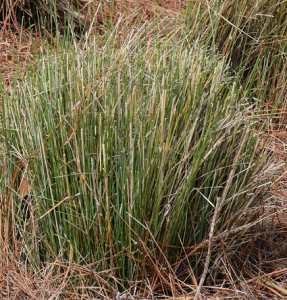Many homeowners are anxious about pruning brown plants due to winter damage. The question of the day is “Can I get rid of these ugly brown plants in my landscape?” This answer may not be one you want to hear but it’s better to wait to prune brown plants damaged by the cold when the new growth appears in the spring. Then, be selective as you make pruning cuts; prune just above the new bud and try to avoid leaving a stub.
The exception to this rule is with plants that have a strong underground root system that reliably come back each year, like gingers and firespike (Odontonema structum). Other plants like hibiscus and firebush (Hamelia patens) should be pruned when new growth is evident. Pruning too early would expose plants to more damage in the event of another freeze. For more information on what to do before and during a freeze, click here.
So what other plants can be pruned now? Here’s a list of things you can prune In February or in early March.

- Prune grandiflora, hybrid tea and floribunda roses by removing dead, diseased or crossing branches. Next, shorten remaining canes by 1/3 to 1/2. Make all pruning cuts just above a bud. Plants may not be dormant so strip any remaining flowers and leaves from plants to reduce disease problems. Also remove leaves that have droped to the ground. Valentines Day is the target date to have this chore completed.
- Prune deciduous trees and shrubs if needed. Prune to remove dead, diseased or rubbing branches. Don’t prune spring flowering plants like azalea, redbud, dogwood, Japanese magnolia and spirea. For more information on pruning trees and shrubs, click here.

- Prune ornamental grasses back to about 10 to 12 inches high to remove the brown in late February to early March before the new growth emerges.
- Prune grape vines by the end of February. For muscadine grapes, prune all branches that are less than 3/16″ in diameter, leaving 2 to 6 buds per spur. Remove most of the spurs located at the top of the trunk to prevent crowding and bushiness. For details, click here.
Lawns have also taken on a straw-like appearance throughout most neighborhoods. A lawn that turns brown after a freeze indicates it has entered dormancy. Don’t be alarmed…this is normal for Florida lawns. As warm weather returns in the spring, new growth will hopefully emerge. In the meantime, once it enters dormancy, it no longer needs mowing. Irrigation may still be needed in the absence of rainfall but once every 14 days should be adequate. Don’t try to force the lawn by applying nitrogen fertilizers and don’t scalp it to remove the brown. Wait and let nature take its course to see if the lawn greens up in March/April. At that time, damaged areas will be obvious and repairs can be made. Wait to apply the first fertilizer application to lawns in northeast Florida in mid April. For more information on maintaining a healthy lawn, check here.
Practice patience and live with the brown landscape for now. So what can you do to jazz up the front entrance of your home or replace spent container plants? Visit a local nursery and look for cool-season annuals. Flowering cold hardy annuals include plants like alyssum, dianthus, lobelia, petunia, snapdragon and stock. These will provide color into April or May and can then be replaced with those that thrive in the heat. For more information on using annuals in Florida, click here.
 3
3
